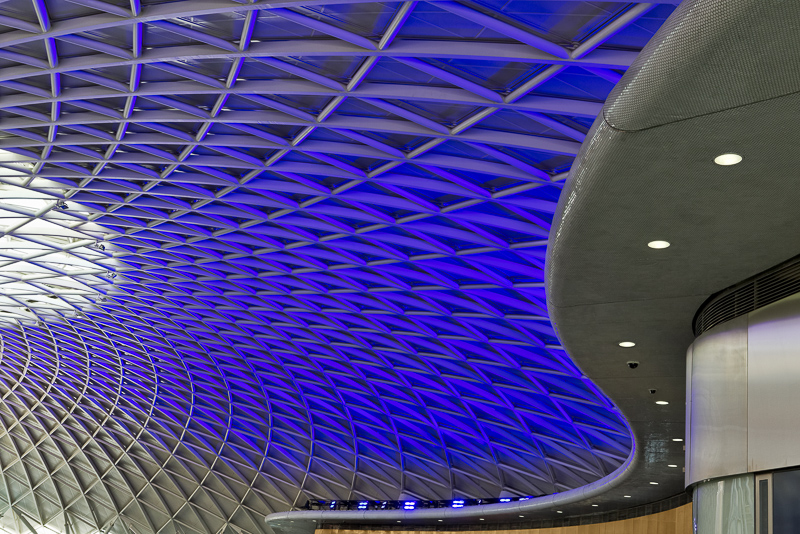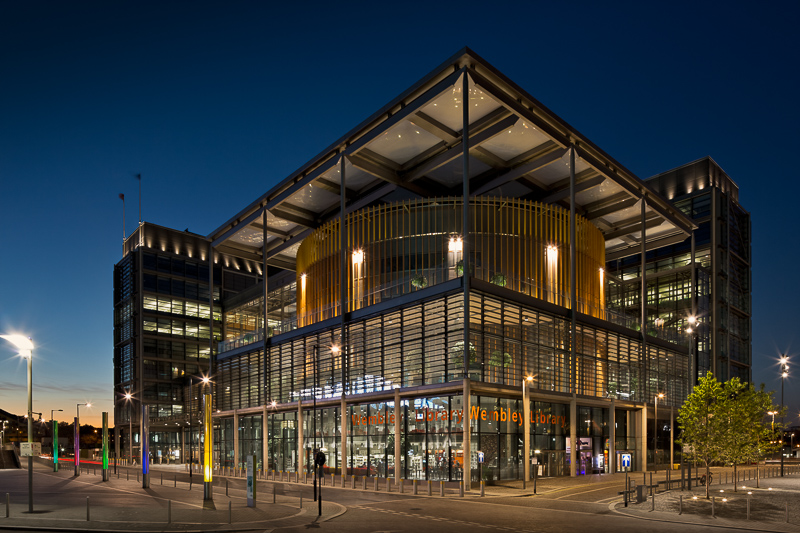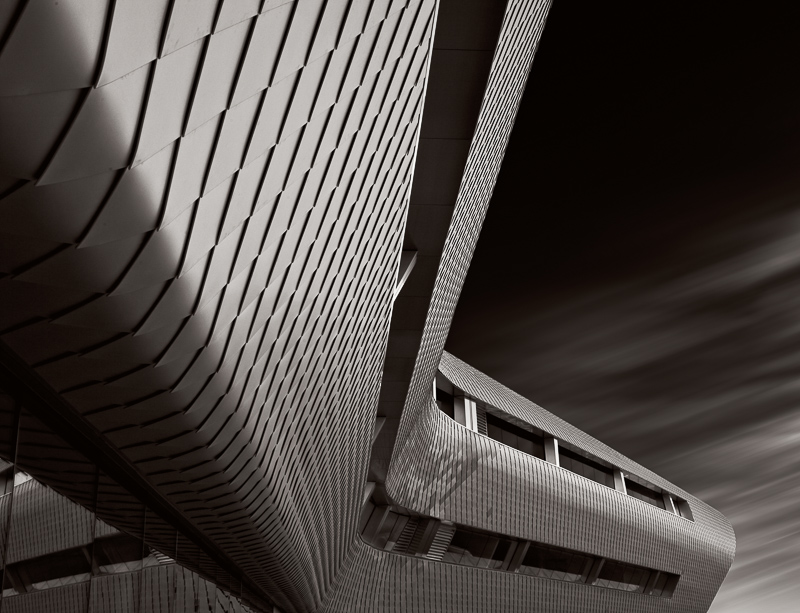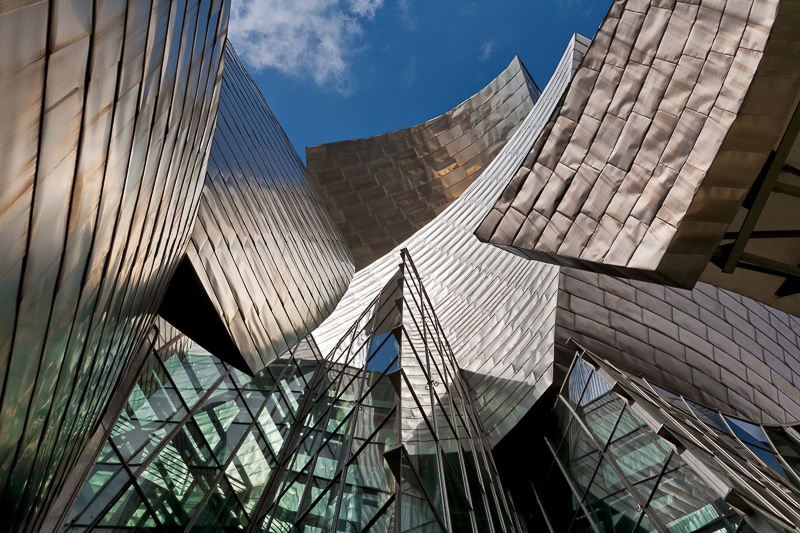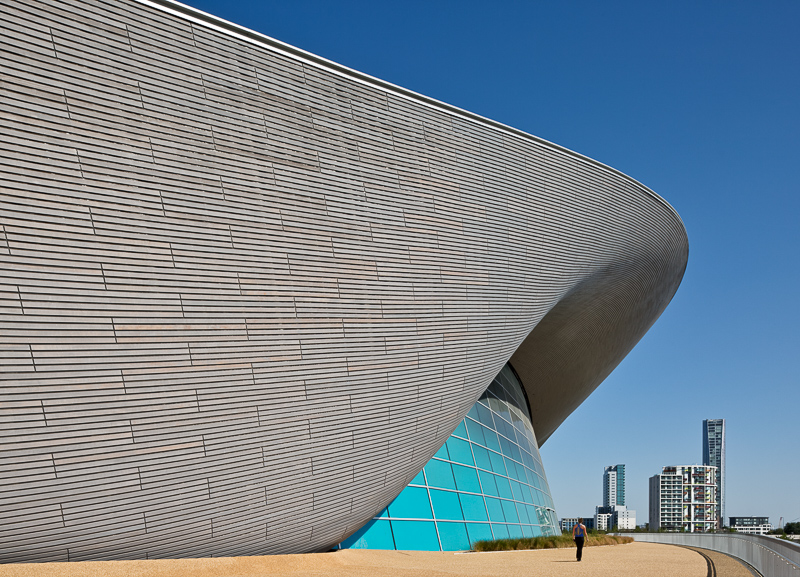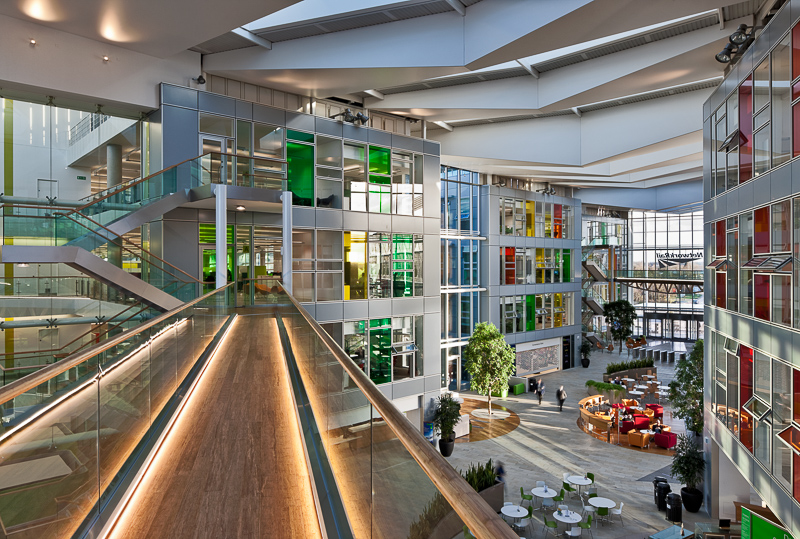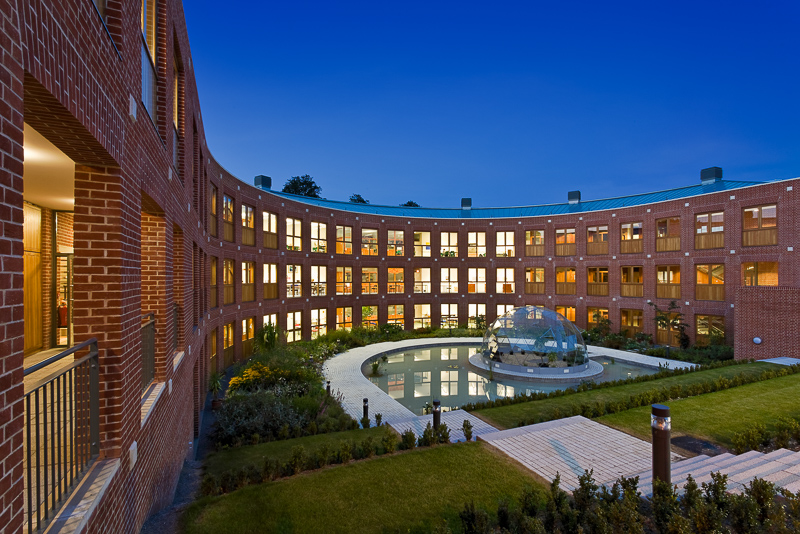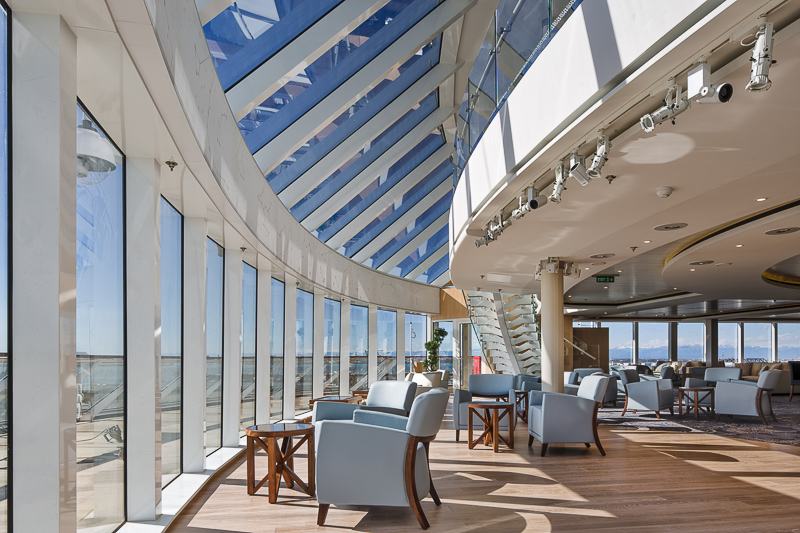Main author
Michael BrooksAnthony Weller - Architectural photographer
Anthony Weller is an architectural photographer who heads the studio Archimage.
Over the course of his career he has covered architectural, interiors, construction, interior design, panoramic and industrial photography.
Recently, Anthony has added aerial (drone) photography to the list of services he can offer.
His client list includes some of the best architects, contractors, interior designers and developers. Much of his commissioned work involves collaborating with design studios and PR agencies to promote a client's project.
Anthony answered some of Designing Buildings Wiki's questions about his career-to-date.
| Designing Buildings Wiki (DBW): How did you get started in photography? |
Anthony Weller (AW): If you were to look at my family's old photo albums you'd see some pictures of me up to about the age of eight or nine - after that I disappear, it was always me on the other side of the camera. I remember, back then, I'd be waiting a week in great anticipation for the packet to come back with my valuable, but probably shaky, prints.
In my teens I bought my first serious camera, it was a Russian Zenit-E, an early and incredibly robust SLR. It was fantastic; it had a built-in light meter and a good lens. Apparently they made over 12 million of them - and I bet most of them would still work, given the chance.
I later studied photography at a polytechnic and then got my first job at the Building Research Station – and that was my introduction to architectural photography.
| DBW: What was it that drew you to architectural photography in particular? |
AW: At my college I studied scientific photography and I remember loving the craftsmanship aspect and the measured approach to working with large format cameras. While I have the greatest respect for photographers working in more exciting disciplines, I personally prefer a style of photography that requires more planning and precision – architectural photography fits the bill perfectly.
Having said that, I did work for 20 years as a photojournalist – I was part of the editorial team on a major construction magazine. Most of the time I was shooting architecture and construction, but there were some news stories that had some hair-raising moments.
I recall, once, my car being scooped up by a JCB and dumped onto some railway lines. I'd been sent to photograph some angry site workers at King's Cross who'd just been made redundant. The worst part was that I was in the car at the time. Rather ironically, I ended up as a news story.
| DBW: What is your favourite piece of equipment to work with? |
AW: I would have said my beautifully engineered Linhof Technikardan 23 camera, but sadly, I just can't compete in today's workplace using that kit anymore. Clients today expect a greater number of images, they want them more quickly and they also expect to pay a lot less than they did pre-digital age. And why wouldn't they, they're used to getting sharp, well-exposed images from their smartphones at minimal cost.
For professional photographers it's tough, and we've all had to up our game and provide even better quality images and more services like panoramas and video. One thing I would say is that most good photographers have an innate ability to compose an image and know how to shoot it to best effect – as Ansell Adams said, “The single most important component of a camera is the twelve inches behind it.”
I suppose my favourite piece of kit has to be my trusty Canon DSLRs – I use a 5D and a 1Ds MkIII; they're so reliable and, in my opinion, they have the best range of perspective control lenses.
| DBW: What do you find the most challenging part of being an architectural photographer? |
AW: Well, you would think it would be bad weather – and you'd be close. But it's not, it's bad weather forecasts that are the most frustrating.
Forecasting is a lot better these days than, say, 20 years ago – but there are still occasions when I've driven many miles to a job, on the strength of a good weather forecast, only to be sat in my car watching the clouds go by.
So what else is challenging? As I said, it's incredibly competitive for professional photographers these days, so just getting the commissions is quite challenging. Not only do you have to be a capable photographer, you have to be a wizard at marketing yourself on your website and through ever-evolving social media.
The big challenge is to convince any potential clients thinking of doing it themselves that there's more to architectural photography than owning a nice digital camera and a copy of Photoshop.
| DBW: What are the differences in the approach you take to your more abstract work as opposed to commercial work? |
AW: For commercial work, what I shoot is more representational and mostly dictated by the client's brief, although as any photographer knows, if a good shot presents itself to you – you shoot it, abstract or otherwise.
I'm lucky that most of my clients give me a fairly open brief and I do appreciate it when they actually request some iconic or abstract shots – something that's not too literal and can stir the imagination of the viewer. There was much more demand for those kinds of shots when I was working on the magazine; an eye-catching image for the cover was a weekly requirement.
For my personal projects, of course, I have complete freedom to experiment with less representational imagery.
| DBW: What has been your favourite commission to work on? |
AW: To quote David Bailey, “My next one” – not that I'm comparing myself to the great man of course!
This is a tricky one; I've been a photographer all my working life – so picking one is quite difficult. For sheer enjoyability, one that comes to mind is a four-day commission last year in Venice to photograph interiors on a brand new cruise ship.
Architecturally, I've photographed a lot of fine buildings, but I'm afraid I really can't single one out as being my favourite.
| DBW: Is there a building you would really like to get a chance to shoot? |
AW: This is a lot easier than the last question – I've always been a great admirer of the architect Santiago Calatrava; the sculptural quality and breathtaking design of his buildings are quite overwhelming.
So it would be a trip to Valencia in Spain to photograph one of his buildings there, or maybe to New York to photograph his World Trade Center PATH station.
| DBW: What advice would you give to an aspiring architectural photographer? |
AW: Round about June every year I get a spate of emails from graduating photography students asking for work or offering to assist. I have to tell them that I rarely use an assistant and I am the only photographer in my company.
My advice is always the same: Don't be discouraged if the commissions don't come straight away; there is work out there. Work on your portfolio and especially your website. If you love architectural photography you'll be shooting some good images anyway – put the best ones on your website and also promote yourself with social media.
Above all, don't lose motivation, being an architectural photographer is very rewarding in lots of ways (other than just financially) - and it sure beats sitting in an office 9 to 5.
(All images copyright of Anthony Weller. Not for further use.)
To find out more about Anthony Weller, visit his website Archimage.
[edit] Related articles on Designing Buildings Wiki
- Architectural photography.
- Construction cameras.
- Grant Smith - Architectural photographer.
- How to commission architectural photography.
- Interview with Paul Grundy - Architectural photographer.
- Photographing buildings.
- Samples and mock-ups.
- Simon Kennedy - Architectural photographer.
- Student resources.
IHBC NewsBlog
Images from inside a Grade II listed hotel show the scale of its collapse
The Corbett Arms in Tywyn has fallen into serious disrepair.
Old Sarum fire in listed (& disputed) WW1 Hangar - Wiltshire Council has sought legal advice after fire engulfed a listed First World War hangar that was embroiled in a lengthy planning dispute.
UK Antarctic Heritage Trust launches ‘Virtual Visit’ website area
The Trust calls on people to 'Immerse yourself in our heritage – Making Antarctica Accessible'
Southend Council pledge to force Kursaal owners to maintain building
The Council has pledged to use ‘every tool in the toolbox’ if urgent repairs are not carried out.
HE’s Research Magazine publishes a major study of the heritage of England’s suburbs
The article traces the long evolution of an internal programme to research 200 years of suburban growth
IHBC Context 183 Wellbeing and Heritage published
The issue explores issues at the intersection of heritage and wellbeing.
SAVE celebrates 50 years of campaigning 1975-2025
SAVE Britain’s Heritage has announced events across the country to celebrate bringing new life to remarkable buildings.
IHBC Annual School 2025 - Shrewsbury 12-14 June
Themed Heritage in Context – Value: Plan: Change, join in-person or online.
200th Anniversary Celebration of the Modern Railway Planned
The Stockton & Darlington Railway opened on September 27, 1825.
Competence Framework Launched for Sustainability in the Built Environment
The Construction Industry Council (CIC) and the Edge have jointly published the framework.






